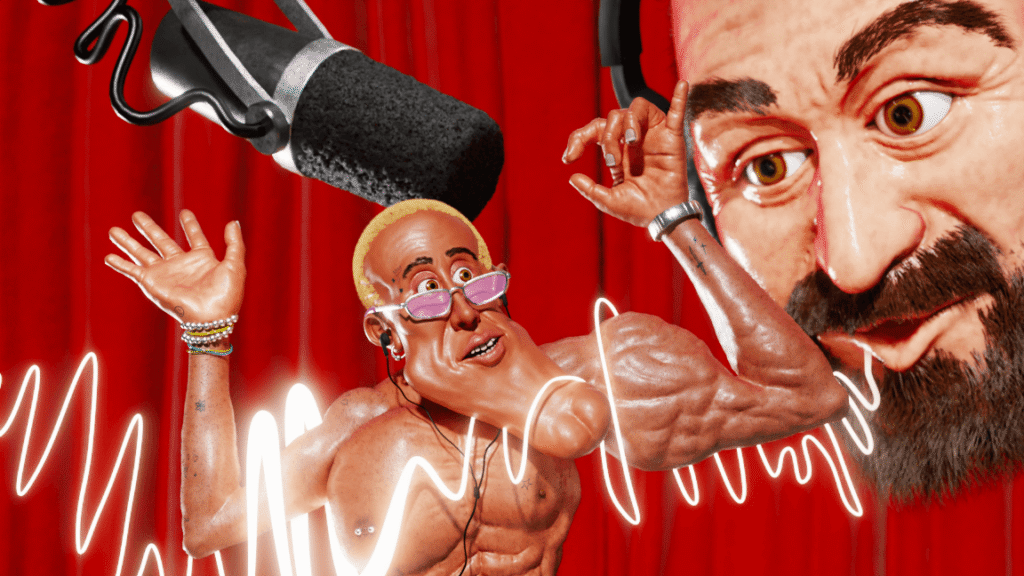Late one afternoon, while Dr. Diamond was in his office exchanging text messages with Andrew Huberman, I asked him about looksmaxxing, the hypermasculinization trend that gestated for years on incel message boards before bursting into the mainstream through TikTok videos and internet memes. To my shock, he had never heard the term but recognized its hallmark interests as soon as I began describing it.
“My kid this morning, he says, ‘Dad, I need buccal-fat removal.’ He’s 17 years old,” Diamond said. He later told me, “By the way, my 14-year-old son has been taping his mouth shut to sleep.”
Diamond’s older son, the 17-year-old, spoke to me recently about his own experiments. “I was doing jawline gum for a little bit, then jawline exercisers,” he said. “I heard about the jaw exercisers through TikTok, and then I heard about the mastic gum through my dad.” He knew other kids who did the same, and it was not uncommon, he said, for them to compare notes. He added that they were less cosmetically minded about their own appearance than younger kids; instead of aiming for a specific look, Diamond’s son said, he and his friends are simply interested in self-improvement.
“Getting older, now, like, all of our friends are in the gym,” he said. “Even kids that, a year ago, I thought wouldn’t ever touch a weight, like, now all our friends are lifting…. So I’d say it’s kind of the same thing with the jawline and the looksmaxxing kind of thing because everyone kind of comes together, so it’s not like you’re feeling this pressure to get a better jawline than your friends, let’s say. You’re just with your friends, just bettering yourself.”
Thinking of looksmaxxing as a social phenomenon clarified for me the value of podcasts that traffic in everything from comedy and the culture wars to the life lessons of ex-Navy SEALS: bullshitting. Like the real friends so many men no longer make, or can’t seem to keep, often the podcast hosts of the manosphere seem to be a reliable source of the cherished tradition of running off at the mouth about books one hasn’t read, articles one heard about from other people, and Wikipedia entries one only sort of remembers. Academically minded podcasters like Huberman often cite actual research, but even so, in the context of an hours-long podcast episode, the takeaways begin to sound as hyperbolic as the idea of chewing on bones as a path to a more handsome jawline.
In conversations with Diamond, I suggested Rogan had come to be a sort of Kardashian-like figure for men—someone whose aesthetic had made them a thought leader and guiding light for gender maximalists. But later I began to believe The Joe Rogan Experience is much more like Gwyneth Paltrow’s Goop for men: offering a sense of companionship on the journey toward optimization, led by a rich guy who’s not gatekeeping his best shit.
One of Dr. Diamond’s patients is Bryan Callen, a stand-up comic and actor who sometimes does color commentary on a podcast alongside Joe Rogan for UFC bouts. After hearing Callen talk about getting his eyelids done on one of his own podcasts—Diamond had told him the surgery would help him look like he got more sleep—I reached out to the comedian in hopes of understanding the manosphere’s embrace of something as ostensibly feminine and queer-coded as plastic surgery.


